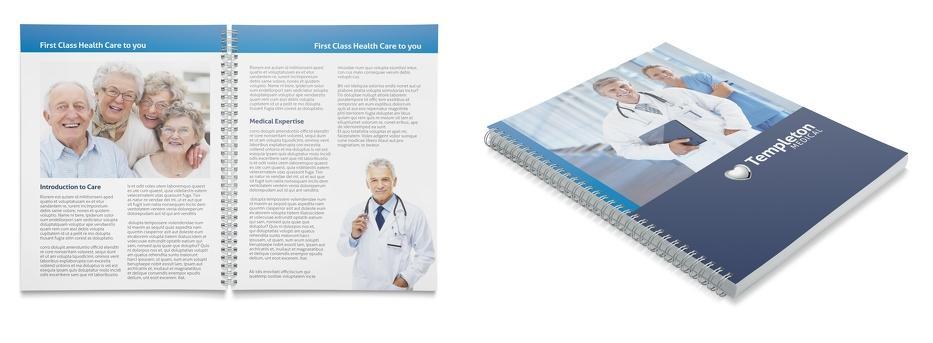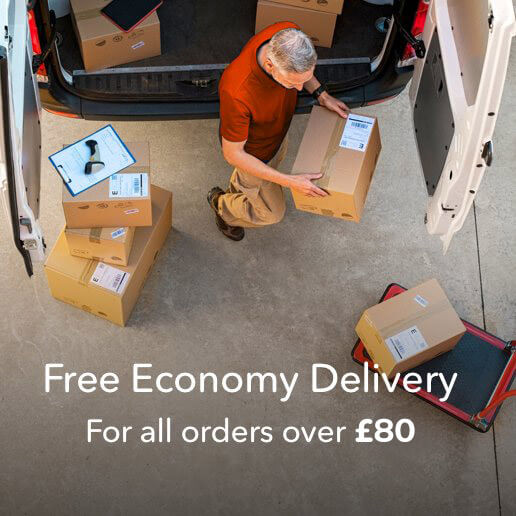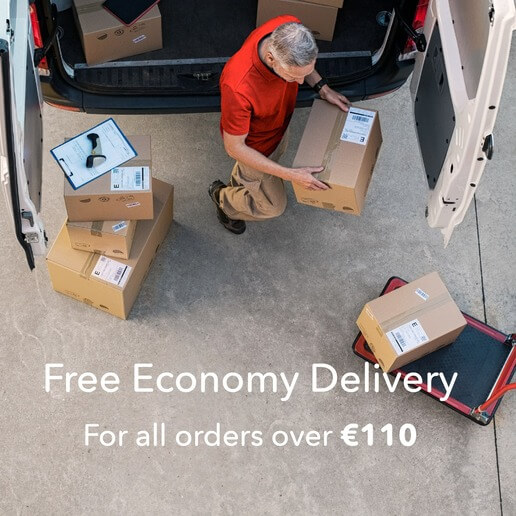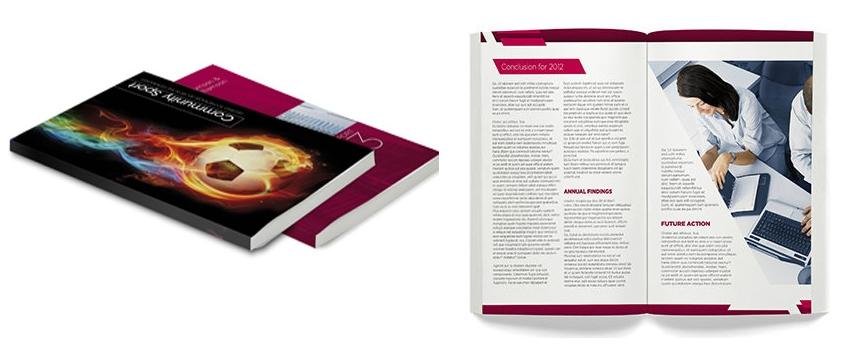3 binding options to consider for your next brochure « Back to list
We’ve spent a lot of time in recent weeks looking at ways to improve the impact and design of your printed brochure. We’ve looked at industries that can benefit from brochures, paper weights to consider and also, which paper sizes to use. All this is great from an aesthetical point of view and will really help to make your brochure stay together when it lands on the desk, on the floor or in the hands of your customers. One thing that is equally as important as these ‘aesthetic’ elements is how your brochure will keep together. The last thing you will want to do is invest money in a brochure, only for pages to become loose very easily or the spine of it to get damaged. This is where the role of binding is so important and below, we’re going to look at three options to consider when binding your next brochure.
3 ways to bind a brochure:
1. Saddle stitch:
The first option for binding a brochure is perhaps the most popular with many companies and that is saddle stitch binding. Saddle stitch (or staple stitched) is perfect for smaller brochures like magazines, product booklets or annual reports. This process involves a staple being used along the spine of the brochure to keep all the pages in place. Saddle stitch is recommended for brochures with 48 pages or less and helps give a professional finish that you will be happy to put your name to. A professional look to any printed material is always important when creating the right impression with your customers, and this is something you’ll certainly get with saddle stitch binding.
2. Perfect bound:
Next up on the list of options for your brochure is perfect bound. If you are looking for a binding solution for thicker reports, detailed documents or a prospectus, then perfect bound is what you are after. Perfect bound involves the process of binding your document together using an adhesive along the spine of the document. This provides a really smooth and professional finish that will last. Perfect bound is also a cost effective way to achieving a great, professional look to any document and is recommended for documents with 40 – 700 pages. Use a thicker page (250gsm – 350gsm) for your cover and ensure you laminate it for that added bit of quality in its look and feel. The internal pages of your document will generally range from 100gsm – 150gsm and we have a range of sizes available in our perfect bound range including A4, A5 and 1/3 A4.
3. Wiro bound:
Last but by no means least on our list of binding options is wiro bound. As the name suggest, this involves using a metal wire to bind your document together. The process involves punching a series of holes along the sides of your document pages and inserting the metal wire. This wire will hold all the pages in place and gives an affordable yet professional look and finish to your document. When opened, a wiro bound document can lie on its flat or can fold fully around. This ease of use makes wiro bound documents extremely popular for documents like annual reports, customer manuals and reference guides. It is suitable to use between 4 and 180 leaves for your wiro bound document, meaning you can use this option for a document with up to 360 pages (front and back). You can choose to position your binding either along the top or down the left hand side.

When it comes to finalising a large document, do you give much time to considering how your final piece will be presented? The choice of binding you opt for will really help enhance your document and the three options we have discussed will all carry a professional look with them. The quantity of pages and type of document you are creating may influence your choice, but you can be confident that saddle stitch, perfect bound and wiro bound documents all provide a level of professionalism to any document.
If you would like more information on the different types of binding options available to you or would like more information on how to make your next brochure or booklet really stand out, get in touch with our expert team today. You can also connect with us today on Facebook, Twitter and Google+ to keep up to date with all the latest news here at Digital Printing.




